After months of rumors, leaked pictures, decoy designs and delays, the HTC One has finally arrived. The phone went on sale in a handful of European countries in mid-March, but those of us in the US market had to wait until late April to get our hands on HTC’s newest flagship Android phone. To say that the HTC One is a special phone is a dramatic understatement. Not only does the device feature an incredible array of internal specifications and a spectacular design, but it carries the burden of being the One phone which could determine the fate of HTC.
If we flip the calendar back to 2012, you’ll notice that HTC’s strategy has changed significantly. A year ago, HTC introduced the HTC One X, One S and the One V – a family of three smartphones which were intended do give consumers the option of picking the smartphone which fit their style and budget. The strategy played out as HTC had planned in Europe. Dozens of service providers offered at least two of the phones for their customers, but things didn’t pan out the same way in the US. AT&T got an exclusive on the HTC One X, T-Mobile called dibs on the HTC One S while Sprint and Verizon chose to work with HTC to create their own variants. Technically, all four major US service providers did offer a “flagship” HTC device in 2012, but there was no unified message for HTC to promote since they were all distinct devices. Towards the end of the year, HTC recognized that its attempt to create multiple devices to meet the needs to different consumers and service providers was not helping the company’s bottom line. HTC’s quarterly profits kept shrinking as HTC had stretched itself too thin to compete with Samsung, Apple and other players in the smartphone arena.
In 2013, HTC chose to wipe the slate clean, concentrating its efforts on a single flagship device – the HTC One.
Hardware

For about a year, many have claimed that the smartphone spec race is dead. The theory states that the components in today’s smartphones are so advanced that HTC and other manufacturers don’t need to bother using the latest and greatest technology because the general public will not be able to tell the difference. While there is some truth to the theory, we’re of the opinion that a flagship smartphone needs to outclass the competition in as many ways as possible and using the most powerful processor and eye-popping display are just a few of the ways the HTC One declares its position as the best smartphone of 2013.
HTC One Specs
- Operating System: Android 4.1.2
- Processor: 1.7GHz quad-core Qualcomm Snapdragon 600
- Display: 4.7-inch 1920×1080 SLCD3 with Gorilla Glass 2
- Memory: 2GB
- Storage: 32/64GB (no microSD slot)
- Camera (main): 4 MP Ultrapixel camera, F2.0, 28mm lens, LED flash, 1080p HDR video capture, Optical Image Stabilization (OIS)
- Camera (front): 2.1 MP, 88-degree wide angle lens with HDR capability
- Battery: 2300 mAh (non-removable)
- NFC: Yes
- Size: 137.4 x 68.2 x 9.3 mm
- Weight: 143 grams
- Special Features: Ultrapixels technology, Image Stabilization, front-facing stereo speakers and HTC Zoe, IR blaster
The main specs used in the HTC One are enough to compete head-to-head with Samsung’s Galaxy S 4 and other flagship devices that will hit the market in the next few months. We’ll be diving into the details on performance of the Qualcomm Snapdragon 600, the Ultrapixel camera and the stunning 4.7-inch 1080p display further on in the review, but we wanted to highlight a few specs which typically don’t get much attention by us or consumers.
HTC BoomSound
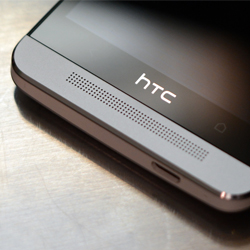
In late summer of 2011, HTC made a bold move by purchasing a 50 percent stake in Beats Audio. They recognized that millions of consumers who relied on their smartphones as a media device were getting a sub-par audio experience. The partnership with Beats Audio gave HTC the chance to offer a sound enhancing Beats profile which added a richer bass experience while listening to music with headphones. But the pre-set audio boost didn’t always sound good and most tech sites wrote it off as a marketing gimmick.
The sound is mesmerizing – something you have to hear with your own ears to truly appreciate.
Like its predecessors, the HTC One does feature Beats Audio enhancements, but HTC chose to take the audio experience of the HTC One to the next level. While the vast majority of today’s smartphones feature a simple speaker on the back, HTC has chosen to equip its flagship phone with stereo speakers on the front of the device and boosted the audio quality with dedicated amplifiers. The sound is mesmerizing – something you have to hear with your own ears to truly appreciate. Like a million other things on the One, the front-facing speakers on the phone comes with a trademarked name – BoomSound. On its own, BoomSound may be a ridiculous name, but it does capture the essence of audio experience delivered by the HTC One. We’d like to note that the audio isn’t necessarily that loud if you’re listening in a noisy environment, but it does deliver a rich, surround-sound like effect which we have never experienced from any other smartphone.
Dual-membrane microphones
We could say dual-membrane microphones ten times in a row, but most people would still look at us with a blank stare. In simple terms, HTC has equipped the HTC One with two MEMS microphones which allow the phone to record distortion free audio in nearly any situation. Most smartphones use a single microphone to record audio. This approach works just fine in many cases, but distortion sets in if you’re in a loud environment and that annoying hissing sound always seems to muddle up a recording which should be whisper quiet.
To solve the issue, the two dual-membrane MEMS microphones are designed to focus on high-sensitivity and high sound pressure. The audio signal from the two microphones is combined, improving overall audio quality and reducing background noise. Unlike BoomSound, having dual-membrane microphones isn’t a feature which will catch people’s attention, but its benefits are clear once you experience it.
Hear the difference for yourself: HTC One versus Samsung Galaxy S III audio recording comparison.
Design
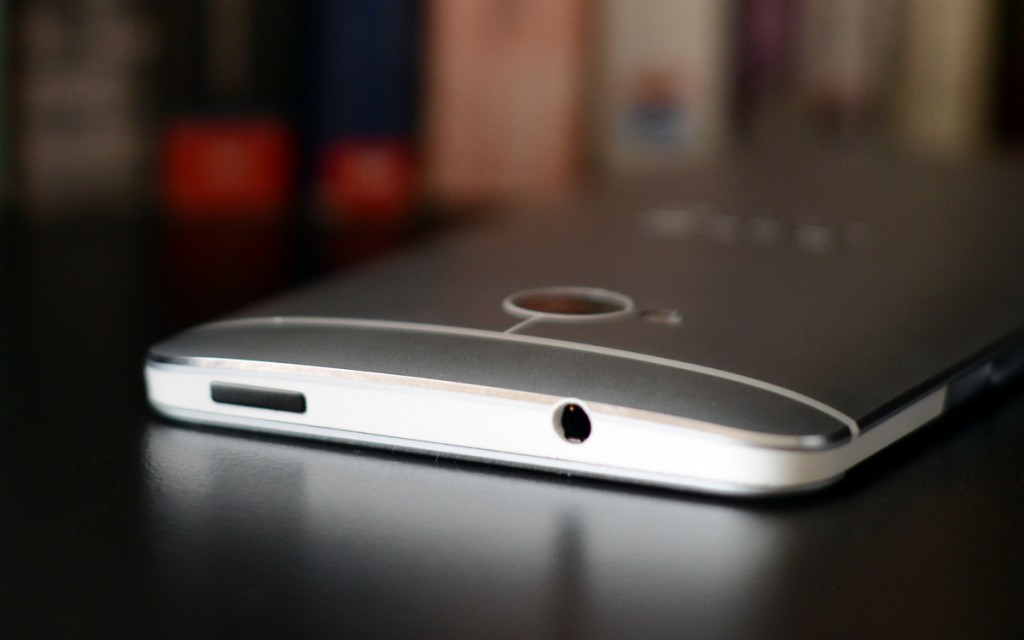
When we saw the HTC One for the first time at its New York unveiling, it was clear that HTC has stepped up its game. The HTC One features a design which is unlike any other phone on the market. Simple, clean, stunning. HTC has taken its experience with aluminum and polycarbonate to create a unique design which demands your attention.
Like most other smartphones these days, the front of the HTC One is dominated by a large touch screen. But that’s pretty much the only design feature the HTC One has in common with other phones. Centered below the display is the HTC logo with a back button on its left and a home button on its right. The two capacitive button layout is a bit odd, but HTC has incorporated the multi-tasking functionality into the home button with a double tap approach.
As mentioned above, HTC has chosen to include two speakers on the device which deliver stereo audio. The speakers are placed above and below the 4.7-inch display, each featuring a four row, micro-drilled speaker grill. The front-facing 88-degree wide angle font-facing camera is housed in the top right corner of the phone while smaller holes for the proximity and light sensors occupy the top left.
The body of the HTC One is comprised of aluminum which has been machined and infused with polycarbonate to create a “zero-gap” chassis. The back side of the device is curved, allowing the phone to fit better in the hand while making it feel a lot smaller than it actually is. The HTC One’s minimalistic design is accentuated on the back with polycarbonate injected lines along the top, bottom and camera lens which assist with reception with the infused handset’s various radios. There’s a large HTC logo in the middle, a small Beats Audio marking towards the bottom and a large camera lens towards the top with an LED flash to its left.
Since the HTC One has launched on most of the major service providers across Europe and North America without any physical alterations, accessory makers are working hard to make sure they have unique cases, docks and other accessories for the HTC One lined up to meet consumer demand.
In my opinion, last year’s HTC One S has a more sophisticated look and feel, but it simply failed to grab people’s attention in the way the HTC One does. The iPhone may be the most recognizable gadget on the planet, but the design HTC One is destined to be iconic.
Display
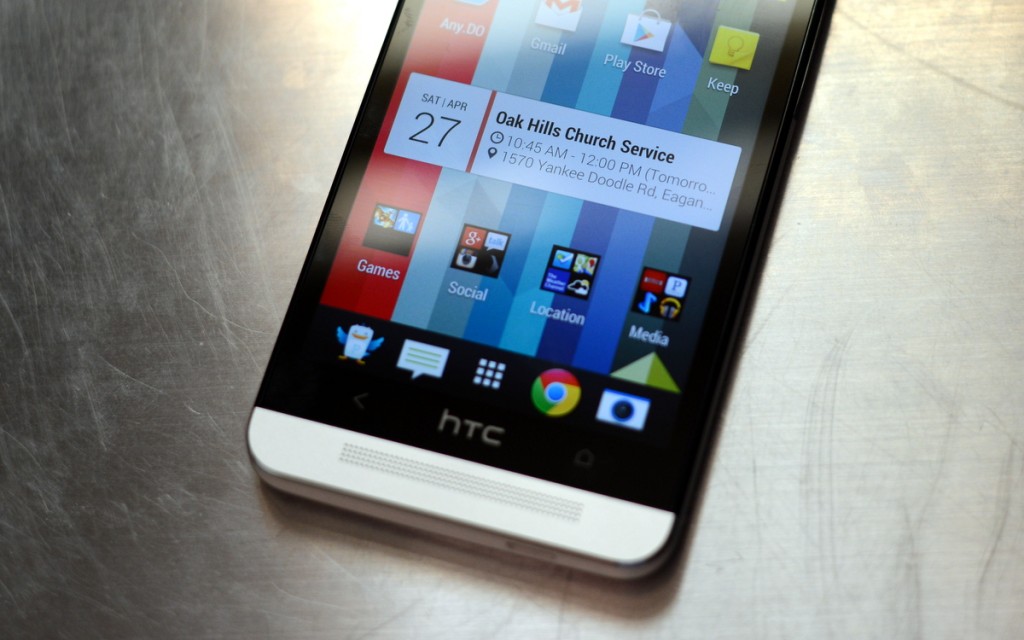
The unique design of the HTC One allows the phone to stand out in a crowd, but the device’s appeal increases exponentially once its display is turned on. We were impressed with the Droid DNA’s 440ppi pixel density, but the HTC One manages to squeeze the same number of pixels into a slightly smaller 4.7-inch display, giving the phone an astonishing 468ppi. Like a few other phones in HTC’s lineup, the 4.7-inch 1080p display on the HTC One is optically laminated with a Gorilla Glass 2 covering, reducing the space between the glass and producing some pretty amazing viewing angles and durability.
the HTC One emerges victorious with the best smartphone display we have ever laid eyes on.
Like so many other features on the HTC One, you have to see the display with your own eyes to truly experience how remarkable it is. The LCD display that HTC chose to use on the HTC One produces incredibly vivid images with true-to-life color reproduction, wide viewing angles, deep blacks and crisp whites. You will have to crank up the brightness to 100% if you want to use the HTC One in direct sunlight, but that’s to be expected with the current technology limitations of LCD displays.
The difference between the displays on the HTC One and Droid DNA is negligible, but the HTC One emerges victorious with the best smartphone display we have ever laid eyes on.
Software
Since the introduction of the HTC Touch, HTC has been focusing on creating a unique software experience for its devices. Many of you will recall TouchFlo, TochFlo 3D or even the original HTC Sense which made its debut on the HTC Hero. At the time, each of those custom software user experiences focused on offering consumers enhanced functionality that the base operating system did not offer, but things started getting out of hand once Google started refining Android with each new update.
With Sense 4, HTC chose to scale things back a bit by reducing a lot of the chrome, textures and gradients in its UI in an effort to align itself with the design language that Google was trying to push. We found HTC’s approach to be refreshing, but it stopped short of being a transformational redesign. That’s all changed with Sense 5. While many of HTC’s custom applications (weather, contacts, dialer and gallery) function the same as they did before, HTC’s software team has reworked the design from the ground up.
Whether you are upgrading from an older HTC device, an Android device from another manufacturer or even an iPhone, the HTC Transfer tool will help you import settings, photos, videos, text messages and more. The backup tool sends a file with your settings to your Dropbox account on a scheduled basis.
With Sense 5, you also get a custom way of viewing your app drawer. Instead of the classic, alphabetical view applications can be organized into folders reducing the need for adding app shortcuts to homescreen.
Speaking of the homescreen, Sense 5 includes a Flipboard-like news reader called BlinkFeed. You currently can’t turn off BlinkFeed, but HTC does give you the option to set your default home panel. You can have a total of five panels counting BlinkFeed and every new panel is added to the left of the BlinkFeed tile.
Along with the updated user interface, HTC has also included software enhancements to its proprietary email, car, gallery, stock, calendar and contacts apps. One of the most noticeable improvements is the car app which launched automatically when the HTC one is places in the official car dock. The app offers distraction free resource while driving with customizable shortcuts, navigation through Google Maps and seamless voice activation for making calls, turning on the radio, playing your albums, checking messages and finding locations.
Sense TV
If you have multiple remotes laying around your house, the fact that the HTC One is equipped an IR blaster should be exciting. The ability to use your phone to navigate your electronic components without any additional hardware or software is a great thing. There are other options currently available that perform the same actions, but many require an additional application. The new Sense TV application is a great tool that doesn’t require anything additional to implement.
The user interface is straightforward and it only takes a couple minutes before you have your devices configured and you are ready to start navigating through your TV or audio equipment through your HTC One. One downside I noticed with the Sense TV app is the inability to control the Playstation 3, but you do get full control of your TV, cable box, and audio system. The list of manufacturers for all component types is exhaustive so your device will likely be available. I configured my two TVs (Panasonic and LG) and my Onkyo home stereo in just a few minutes. I was actually surprised how little time this took as I remember the time-consuming process I went through setting up the same devices on my Logitech Harmony remote.
The software interface gives you a quick visual representation of what is on TV. You can jump through pre-configured categories like Recommended, Movies, TV Programs, Sports, Social, and Channel Guide or arrow down the specific type of program you want to watch within the listed categories, making it easy to find that Drama you were in the mood to watch. Now that you’ve selected the type of program you want to watch, hold up your HTC One, tap the image of the specific program and your phone will change the input settings on your TV and cable channel on its own. Sense TV allows you to open other applications without losing the ability to manage your TV by making the basic controls readily available withing the notification panel.
Sense TV is a smart application that makes it easy for you to watch and manage your TV with very little effort. I’m a visual person and seeing the images of the programs makes it easy to quickly identify the program I want to watch. It will be interesting to see how developers implement the new IR blasters to create other third party applications to perform the same function as Sense TV.
BlinkFeed
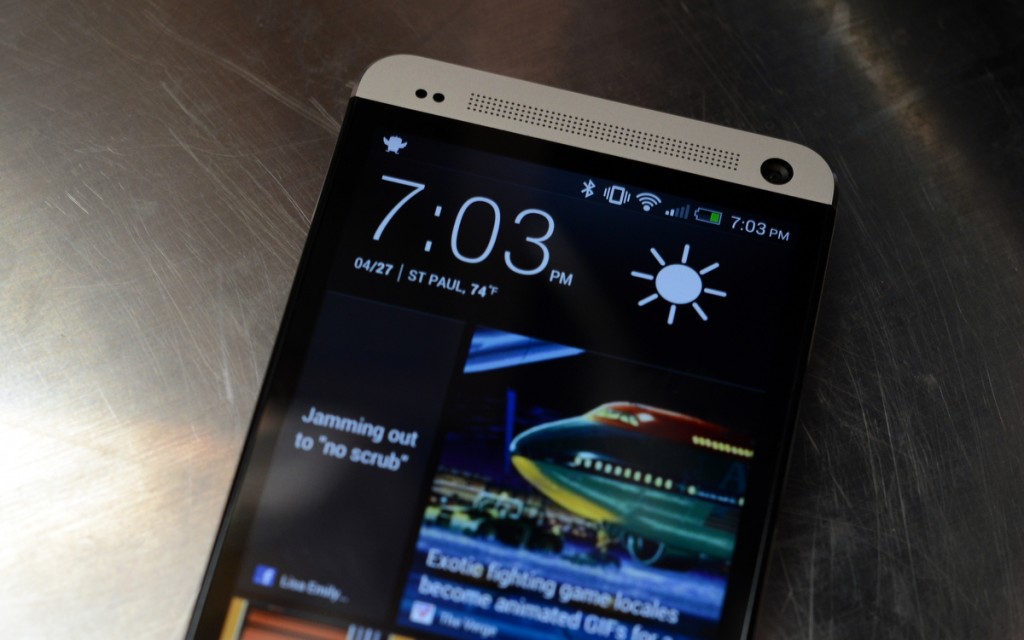
BlinkFeed is a very slick news and social media aggregator with tiled graphics providing you a similar look to the Flip Board application. You scroll up and down through your series of feeds and tap on the news item you want to read. It’s as simple as that. When you are done reading, tap the back button and you will return to your feed. The simplicity of BlinkFeed is what I would expect from any news reader, but the one thing that bothers me is the constant scrolling to get to the top of my feed list so I can refresh the news. You can quickly jump to the top of the feed by double tapping the navigation bar, but HTC doesn’t really take the time to explain that and several other features within the software. The application uses the common technique of swiping down to update your feeds, but that action can only be performed at the top of your list.
When using a news reader it’s important to be able to customize your feeds and this is an area where I feel BlinkFeed fails when compared to similar news readers. The application breaks the feeds into three sections: Services & Apps, Featured Headlines, and Categories. Each of these provides you a predetermined list of feeds to select. However, there is no option to manually add a feed.
The Services & Apps section provides the option to add Facebook, Flickr, LinkedIn or Twitter services to your BlinkFeed. There is no need to log in prior to configuring as a settings option is provided, allowing you to log in to each service and Apps section gives you the opportunity to add your Calendar, HTC Share and Kid Mode to BlinkFeed as well.
The Featured Headlines section gives you a list of popular content providers in various subjects including News, Entertainment, Technology and Sports. Providers you will see here include Associated Press, ESPN, and Engadget among many others. Selecting any of these providers will add them to your BlinkFeed.
Finally, the Categories section allows you to select from 11 general categories to enhance your BlinkFeed application. Some of the categories included are Trending Topics, Business, Design, Entertainment and Music. A few of the categories allow you to refine the type of content you want to see. For example, within the Entertainment category, you can specify what type of Entertainment you want to see in your feed such as Movies, TV, or Entertainment highlights.
Overall, BlinkFeed is a solid, albeit not original, feature. The content providers selection (approximately 1300 at the time of this article) provide the user with diverse feeds to use with the application. There are a couple issues that I hope are addressed in a future update. The first is the ability to turn off BlinkFeed. The other issue needs to be address is the ability to personalize news sources by adding custom RSS feeds. Once these features are added, I can see myself switching over to BlinkFeed and uninstalling apps like Feedly.
Video Highlights
While HTC was busy coming up with fancy names for the HTC One’s front-facing stereo speakers and it’s integrated news and social media aggregator, the company somehow forgot to highlight one feature which makes the device truly unique. Video highlights are 30 second video clips which are created on the fly using your videos, pictures and Zoes (we have more details on this new feature in the camera section below). Simply open the HTC One’s gallery app, sort images by Events and you’re set to go. We all love taking pictures and posting our favorites to Facebook or Instagram, but it’s always hard to capture the mood of an event or an afternoon with your kids in the park with a single shot. Video highlights brings your media to life and makes it extremely easy to share.
Since video highlights are limited to 30 seconds, users are given the ability to select up to 13 items which they want to include in the clip, but the only other customization option available is the theme which adds various color filters and flares to your video along with a custom audio track. HTC currently has six themes to choose from, but that number should increase with future software updates.
Once you have the perfect video highlight, you can save it to your device and share it with all of your friends through your favorite social media networks. HTC has even created its own sharing platform called Zoe Share which allows you to upload the video and its associated Zoes and images so that people can view or even download the various items used to create the video highlight.
Video Highlight samples
Zoe Share samples
HTC Sense 5 and all of its new software features make the HTC One a truly unique device. The software feels fresh, clean and intuitive to use. Features like BlinkFeed may feel like bloat for those who are already deep into Android, but they offer a unique way of interacting with social media and news for those who may not already be using Feedly, FlipBoard or one of the dozens of other apps which offer a somewhat similar experience.
The one thing that’s truly missing is a tutorial system which walks new users through features like video highlights or the customization of the app drawer. HTC has done a great job of documenting these features on its HTC Show Me YouTube channel, but the videos would be more effective if they were available directly on the phone.
Performance
A flagship phone with all the latest bells and whistles can grab the attention of the media, but the real test of a device is how it handles itself under pressure. The HTC One may be equipped with a 1.7GHz Snapdragon 600 processor and 2GB of RAM, but that doesn’t necessarily mean that it will be able to handle everything we can throw at it. Or maybe it can…
Like many other bloggers out there, we loaded up a few of our favorite benchmark apps to see how the HTC One stacks up against the competition. Based on the numbers below, you can see that the device easily outclasses the Droid DNA, a phone which has been considered to be the best device in HTC’s lineup for the past 6 months. While benchmark numbers give us a good idea of a device’s raw processing power, they don’t give us a good sense of how the phone actually performs in day-to-day use. To put the HTC One to the test, we opened up Google Play and proceeded to download a few gigs of high-definition 3D games. After playing The Dark Knight Rises, Iron Man 3, Fieldrunners 2 and the new Ravensword: Shadowlands for a few hours, we concluded that the HTC One is probably the best Android gaming phone currently on the market. Naturally, the front-facing stereo speakers and 4.7-inch 1080p display helped with the overall gaming experience, but we honestly couldn’t find a single issue to complain about. Games loaded extremely fast and frame rates were as smooth as butter.
The only flaw in the HTC One’s performance is HTC’s aggressive control over the device’s 2GB of RAM. Due to their size and memory requirements, we wouldn’t expect the HTC One to keep any of the games listed above in active memory while making a phone call or checking twitter, but we found that Chrome, Foursquare and Facebook would need to refresh if we went back to them after looking at 2-3 other apps. The experience isn’t optimum but we know why HTC is keeping a close eye on the device’s available memory. In the past, the HTC Sense launcher has always been a bit laggy and would often force users to wait 5-10 seconds to reload – an issue we have yet to experience on the HTC One.
| Benchmark Test | HTC One | HTC Droid DNA |
| AnTuTU | 22,166 | 20,996 |
| Quadrant | 12,226 | 8,173 |
| Nenamark 2 | 61.1 FPS | 59.1 FPS |
| Vellamo | 2,432 | 2,405 |
| SunSpider 0.9.1 | 1,205 | 1,158 |
Cameras
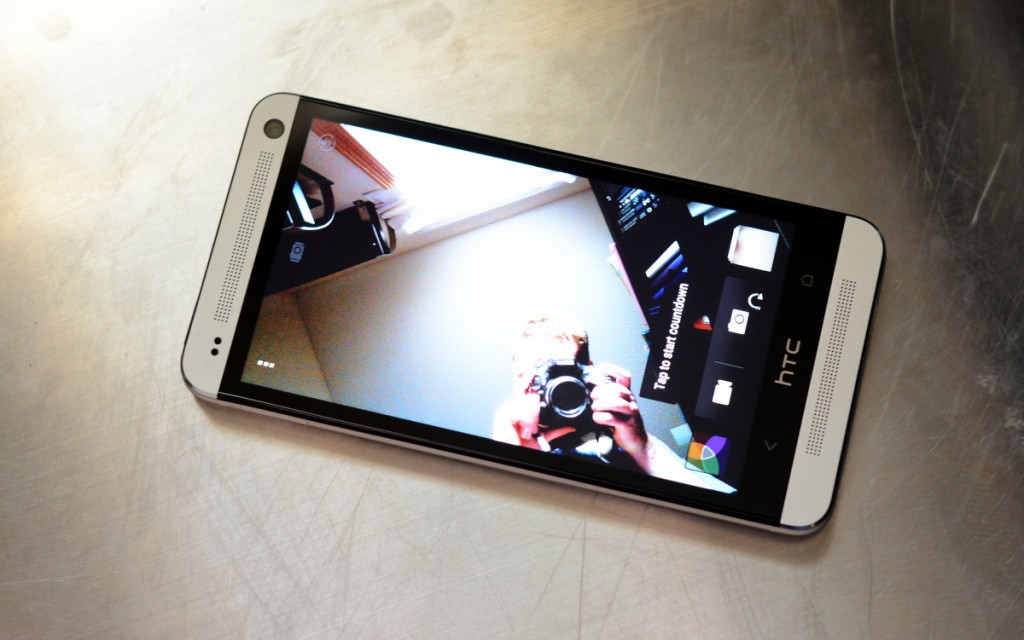
The unique design and audio experience delivered by the HTC One put the competition to shame, but HTC wanted to make a statement by introducing UltraPixels to the world. What are UltraPixels? Technically, it’s a marketing term to hide the fact that the HTC One ‘s camera features a 4 megapixel imaging sensor. No, that’s not a typo – the HTC One’s main camera is only capable of capturing 2688 x 1520 pixel images. That’s half the pixel count of what the HTC One X is capable of and less than a third of the pixels used to capture images on Samsung’s Galaxy S 4.
UltraPixels work exactly like the pixels on any other digital imaging chip. They capture light to create a digital image. What makes UltraPixels special is their size. Over the past few years, the megapixel race allowed chip makers to shrink the size of pixels, allowing them to increase the megapixel count while keeping the chip size constant. While more pixels on a sensor allow a phone to capture more data for an image, there is a trade off. As the physical size of the pixels decreases, so does the amount of light they can absorb.
HTC has broken the megapixel myth with the HTC One
Simply put, HTC has broken the megapixel myth with the HTC One. Those who know anything about photography will tell you that megapixel count has little to do with how good a digital image turns out. That being said, megapixels still play a very important role in digital photography. While the larger UltraPixels produce amazing low-light images and do an incredible job of freezing time in its tracks, the fact that the HTC One is limited to 4 megapixels does have its down sides. Since there’s less data being captured with each image, there’s less detail to work with if you want to zoom in or crop the image. In most instances, having a smaller picture isn’t a huge deal. We mostly share out pictures online through Facebook, Twitter and Instagram, but there are some who want to get more out of their pictures and use them in different ways.
We could write a thousand words to tell you about how the UltraPixel camera on the HTC One performs or we could let you experience the images for yourself. The images below have not been edited or enhanced in any way. If you would like to see them at full resolution, you can right-click on a thumbnail and select “open link in new window.”
HTC Zoe
The Ultrapixel camera sensor may get most of the attention when the HTC One is brought up in conversation, but that does not mean that the phone’s camera is a one trick pony. The HTC One introduces us to a brand new way to capture images – HTC Zoe.
When in Zoe mode, a 3 second video is captured for every press of the shutter button. The camera is actively listening while in this mode and will include the second before you press the button and the next 2 seconds. This brings your photos live in the gallery and allows others to relive your experience more than before with just a photo when sharing.
There’s more to a Zoe than just a short 3 second video. Within this media file there are approximately 20 images that will help you find the best shot for those instances when your subject blinks or turns their head. You can also use the images captures with Zoe to stitch an action shot together which displays multiple frames in a single image or remove photo bombers or other moving object from your picture.
The Ultrapixel camera on the HTC One may not capture perfect pictures every time, but the overall camera experience is delightful. The shutter speed in insanely fast and the low-light performance is unmatched. While I’d like a higher megapixel count on the HTC One, I do own a high-end DSLR which outclasses the HTC One and any other smartphone by a long shot. If you’re looking to take professional pictures, get a professional camera. If you’re looking for a phone that will take good pictures in nearly any situation, get the HTC One.
Battery
Beneath all the glitz and glamour of the specs, design and software of the HTC One, lies a 2,300 mAh battery which is tasked with keeping the phone up and running for as long as possible. In order to keep the device fairly thin, HTC has stacked the internal components in a pyramid structure, allowing HTC to cram in a slightly larger battery. A 2,300 mAh battery is massive when compared to the average batteries used to power smartphones from 2012, but is it enough to keep the HTC One’s 4.7-inch 1080p display lit up to your heart’s content?
If all you plan on doing is watching movies or playing games with the HTC One, the 2,300 mAh battery will only last you around four hours. Fortunately, there are few who would actually spend four consecutive hours playing games or streaming movies on a mobile device. For the rest of us, the HTC One’s battery should hold up just fine. In my day-to-day use of the HTC One, battery consumption fared well when compared to previous HTC devices. On average, the HTC One delivers 14.5 hours of battery life, slightly more than what I experienced with the HTC Droid DNA. Typical daily phone usage included managing three email accounts through Gmail, checking Twitter a few times per hour, one hour of gaming, reading a dozen blog posts and two hours of music playback with a total screen-on time of 3.5 hours.
If you’re interested in stretching the battery life on the HTC One a bit more, we recommend enabling HTC’s power saver mode. Power saver gives you the ability to throttle the CPU, reduce screen brightness, turn off vibration feedback and kill the phone’s data connection when the display is turned off. Simply throttling the CPU can give you an extra hour or two of up time, but with all of the power saver settings turned on, the HTC One can last up to two full days on a single charge. I’d never actually use the data connection toggle unless there was an option to turn data back on a regular intervals or whitelist certain applications so that notifications as allowed to pass through.
On a few occasions, I did manage to make it through a full day (6am until roughly 10:30pm) without the HTC One battery dying on me. The HTC One isn’t going to win any battery life prizes, but it should be more than enough for the average consumer.
Call quality
Before I wrap up the review of the HTC One, I thought that it would be a good idea to remind you that it can also be used as phone. Imagine that! For the past few weeks, our team has tested the AT&T, Sprint and Developer Edition HTC One (using T-Mobile service) and have had no dropped calls or issues with data connectivity. Phone calls come through loud and clear on both ends and the noise cancellation features on the device work well enough to mask the sounds of a busy sidewalk during rush hour and the annoying rattles of an car that’s more than a few years past its prime.
Wrap up
As you can see, there’s certainly a lot to talk about when it comes to the HTC One. HTC took a gamble by focusing its efforts on a single device and equipping it with a four megapixel imaging sensor. Did the gamble pay off? I think it did. The HTC One is by far the best smartphone I have ever used. HTC will always have to justify its actions as long as Samsung and Apple dominate the smartphone space, but the HTC One has set the company on a new course and will show consumers that HTC is currently ahead of the competition.
There will always be phones with better specs and newer software, but Samsung, LG, Motorola, Sony and Apple will need to bring their very best if they want a shot at taking down the HTC One.




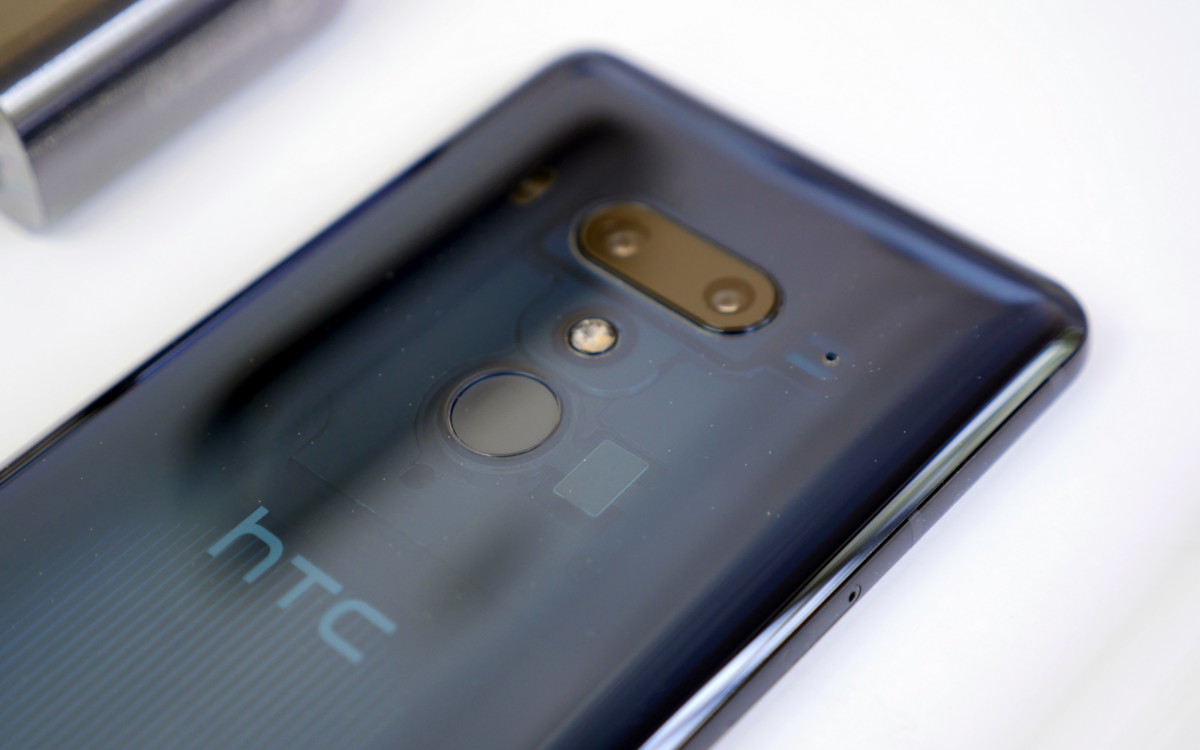
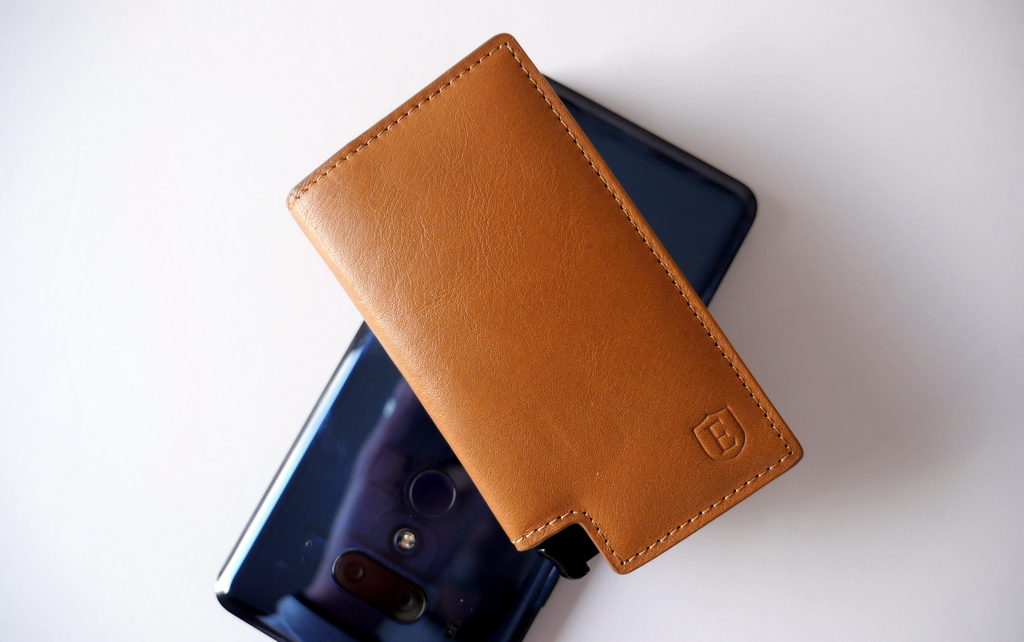

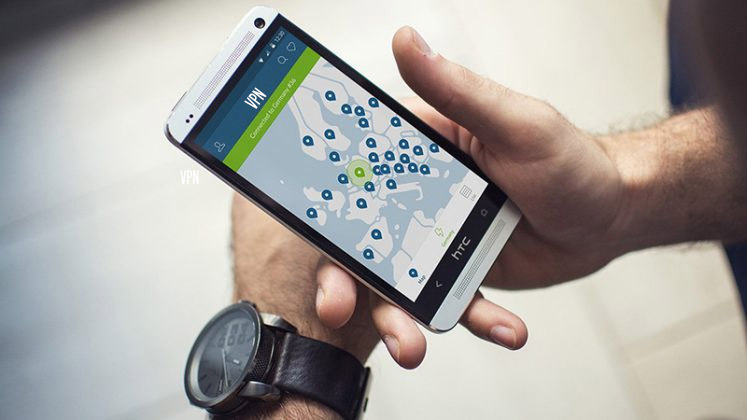


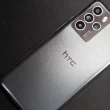
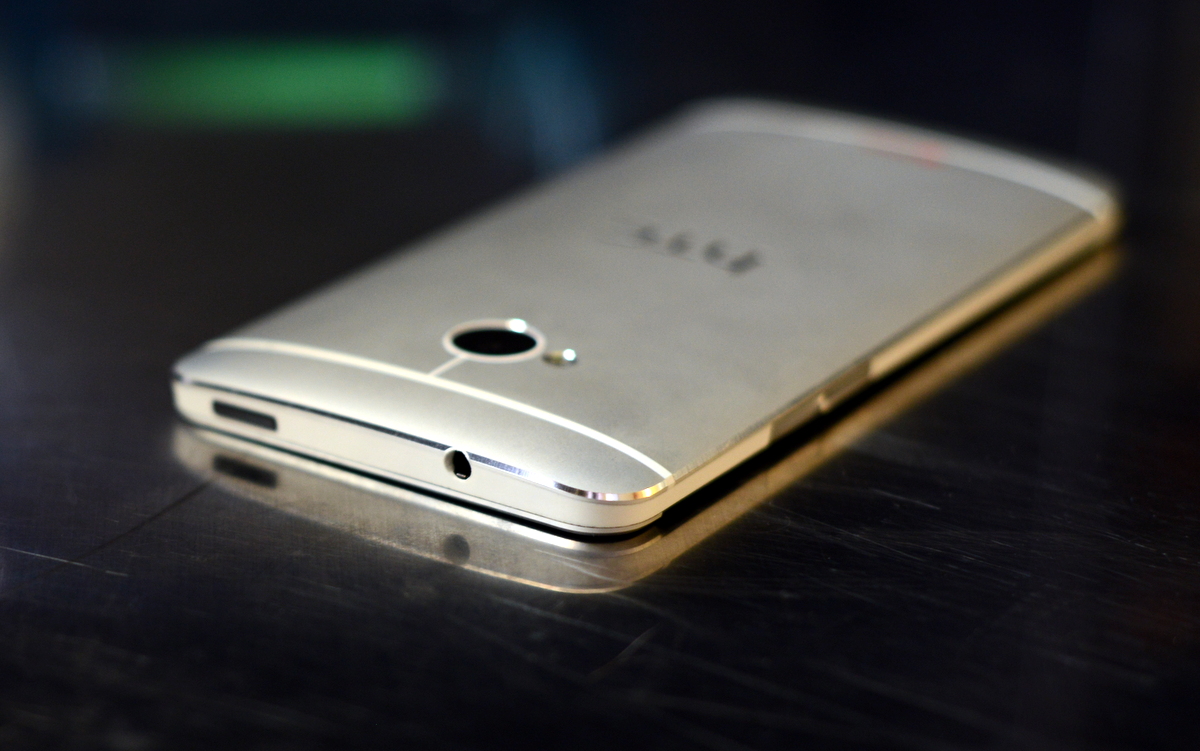
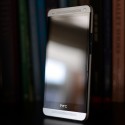
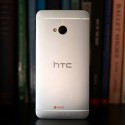
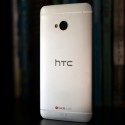
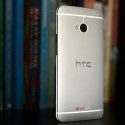
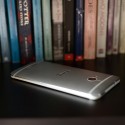
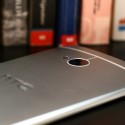
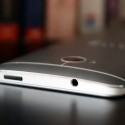
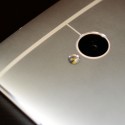
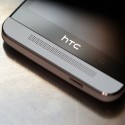
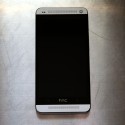
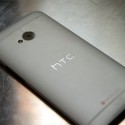
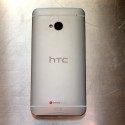
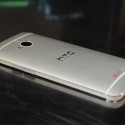

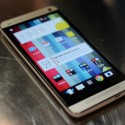
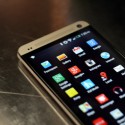

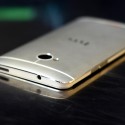

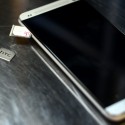
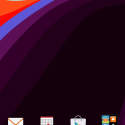


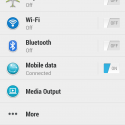
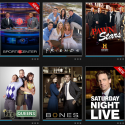
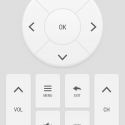

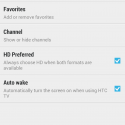


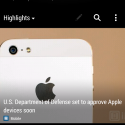

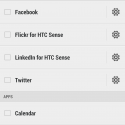









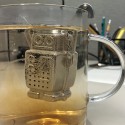




















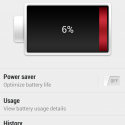
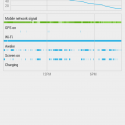



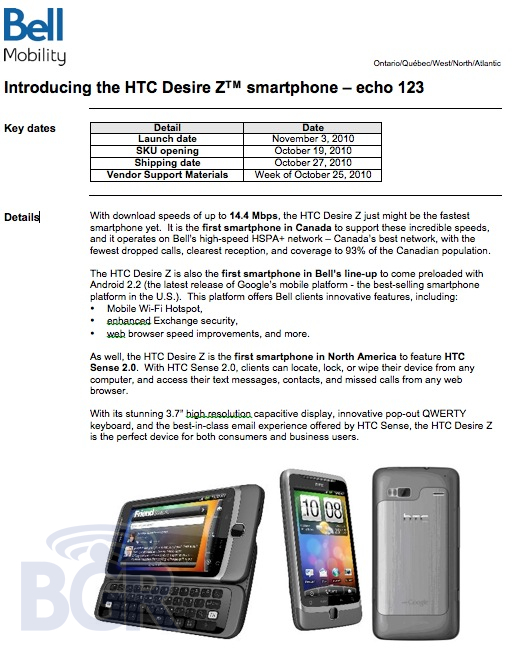
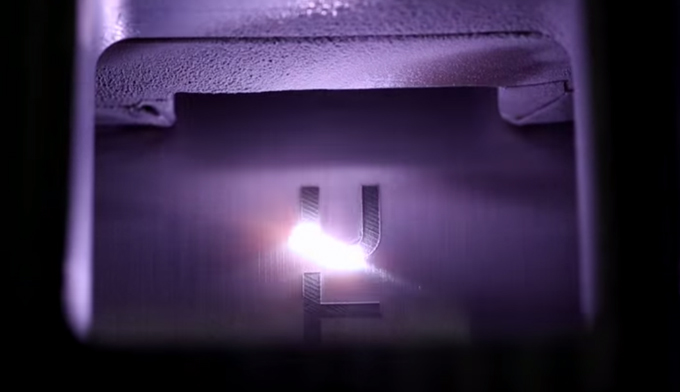
I do think the HTC One is the best, but many sites declared the Samsung Galaxy S4 the better one. Some of the comparisons looked unfair (some camera comparisons surprised me), but no matter what, the S4 will win in sales. Only few sites said the HTC One was better.
Most sites and reviews I’ve seen have said that the HTC One is better :D. We might be looking at different sources Filip ;).
But I agree with you on the Sales part. HTC One is a top runner but no matter how good it is, Samsung and Apples dominance in the marketing world will see them sell a lot more regardless.
I don’t know. I live in Croatia and the S4 is selling for less money, but it’s far more advertised (talking about T-mobile here), but you get a mini loudspeaker with the One. You get a chassis with the S4, but still a little cheaper. IPhone still waaay more expensive. Also, the S4 was sooner available than the One. I used HTC, Samsung, Sony and Apple phones, but HTC is my favourite. I actually can’t understand why the AMOLED display is so popular. HTC’s Super LCD3 is much better and, although we aren’t rich and still young and can’t afford expensive phones (except the iPhone, because you’re a show off with it), every single one of my friends thinks the One is better than the S4. No offence, but people are not very educated (talking about America here :/) and don’t do research before buying phones, and the results are thousands of Apple fans. Samsung is still Ok, but it’s too slowly becoming famous just because of the name. Why I don’t like Samsung is because HTC could’ve too just taken a piece of plastic and cramped it with hundreds of useless apps. Te phone is good, very good, but it’s nothing against the sweat, blood, tears and fear put into the One. What do you think?
You have some great points. Samsung and Apple phones will always sell a lot because the two companies have a lot of money to throw at advertising. If it’s on TV, magazines, billboards or in movies, people recognize them and want to be part of the “in” crowd. As you stated, people do not do their research and buy these devices simply because they are popular.
Hopefully the HTC One will show consumers that HTC makes better phones than Apple and Samsung.
Thanks for the tip re: snapping back to the top of the BlinkFeed! To think that I’ve spent almost a week with my new phone and have been “hand scrolling” back to the top every time!!!
That’s what we’re here for. HTC has some great features, but they need to find a way to explain them a bit more and reveal the little tricks which make them even more appealing.
Been a Samsung user (S2 is best IMO) but with current design of Samsung (plasticky) this turns me off. HTC one gap free and aluminum is just too sexy but some users are really scared scratching their device so they use jelly case or other cover that destroy the aesthetics of phone.
Choosing between S4 and ONE has some trade off. The only trade off for me is the Battery of ONE, but iPhone users don’t complain so I can live with it. S4 specification especially the LTE version but the design is just S3. So, I will choose HTC One.
I’m saddened to see that multi-tasking wasn’t mentioned except for the fact you double tap the home button to access it. Many people have complained that the HTC One has HTC’s over aggressive task manager still that ends programs prematurely when there is plenty of ram available. Can someone comment on this? It’s a massive annoyance on my HTC One X+. I was interested in upgrading to the HTC One, but I can’t stand having a website I’m reading, or other apps reload each time I take 5 seconds to respond to a text, forcing me to wait to respond, or to find the spot I was reading from again each time.
Multi-tasking was addressed in the performance section of the review. HTC’s aggressive RAM management is still present in the HTC One, but I don’t feel it’s as bad as it was with last year’s models.
Ah I skipped over that somehow while I was looking for the “multitasking” keyword. =P Thanks for pointing it out!
Hi Nick
HTC One is truly one of kind flagship , with a mindblowing design. I brought a silver HTC one after waiting for more than two months for it to arrive in my country. But was suprised to see gap only near the top right side of the speaker grill. I returned the headset to the shop and am waiting for a replacement.
Dont you think HTC should have maintained stringent QC before packaging them and selling to customers
Definitely, but it’s hard to say if the issue you described was present when the phone came off the production line. I’ve heard that a few people say the gap increase over time. I hope your replacement device did not have the same issue.
Suffer from kidney disease? improve your kidney health naturally
find out here https://twitter.com/soniaw17/status/350967606267748352
Great review without the biased flaming of other devices
HTC has raised the bar in my opinion and reverted to their original ethos of innovation and style
I have owned my ONE since launching and have never had a problem never stuttered, lagged or dropped a call I’m just as impressed now as I was when I first turned on
Way to go HTC
is there not a microSD card slot?